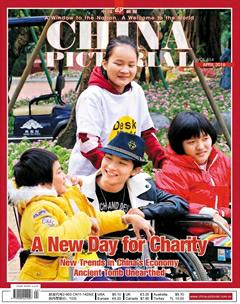Marquis Haihun’s Tomb Brought to Light
by+Qiu+Yang+and+Luo+Ting
This March, an exhibition titled“Brilliance of Five Colors: Archeological Findings of the Han Feudal State of Marquis Haihun in Nanchang”opened at the Capital Museum in Beijing. The relatively recent discovery of the tomb of Marquis Haihun of the Han Dynasty(206 B.C.-220 A.D.) rivals the famous Han tombs at Mawangdui, Changsha, which are described in Chinese middle-school history textbooks. “The quantity of relics unearthed from the tomb eclipses Mawangdui,” asserts Yang Jun, head of the archeological team responsible of the excavation of Marquis Haihuns Tomb. The Han tombs at Mawangdui are the final rest- ing place of Li Cang, prime minister of the feudal state of Changsha in the early Han Dynasty, and his family. The tombs boast magnificent and complicated chambers and abundant funerary objects, which archeologists consider important relics to research the Chinese funerary system, crafts, and sciences of the early Han Dynasty.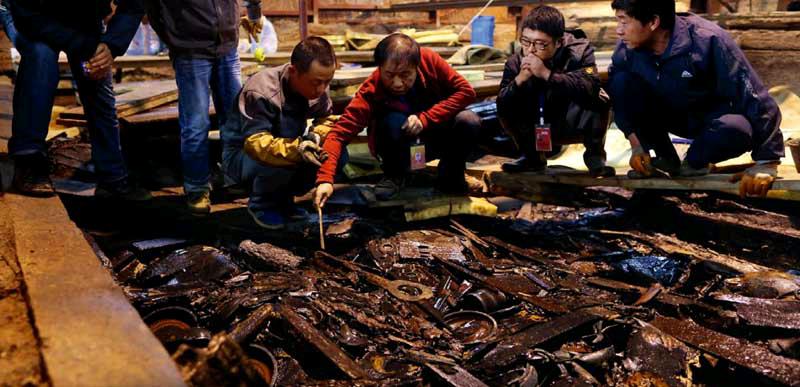
A Treasure House
At around 4 p.m. on March 23, 2011, Yang Jun, then a research fellow at Jiangxi Institute of Archeology, received a call from Xu Changqing, president of the Institute of Cultural Heritage and Archeology of Jiangxi Province. Xu reported that relics were being stolen from an ancient tomb in Xin- jian County of Nanchang, capital of Jiangxi Province, and asked Yang to check the hole. The following day, Yang visited the site and discovered the tomb of Marquis Haihun of the Han Dynasty. Yang and his teammates quickly realized that it would take years to excavate the massive tomb.
The tomb had already been robbed several times. Yangs archeological team even found a hole dug by robbers during the Five Dynasties period (907-960). Due to its complicated structure, the archeological team didnt excavate the tomb immediately.
In November 2015, after several years of excavation, the tomb of Marquis Haihun was finally brought to light. A slope dropping 30 degrees leads to the entrance to the tomb, behind which is a hollow square-shaped chamber housing the coffin. Surrounding the 70-square-meter main chamber are corridor-shaped storage rooms separated by alleys.
The unearthed relics were incredibly plentiful. Excavators unearthed horses, chariots, and terracotta servants one after another from the southern chambers. The west storage held many bronze weapons, armor, chessboards, and wooden lacquerware, as well as thousands of bamboo slips and nearly 100 wooden tablets. The textual findings will be particularly helpful to illuminate society of the late Western Han Dynasty (206 B.C.-25 A.D.).
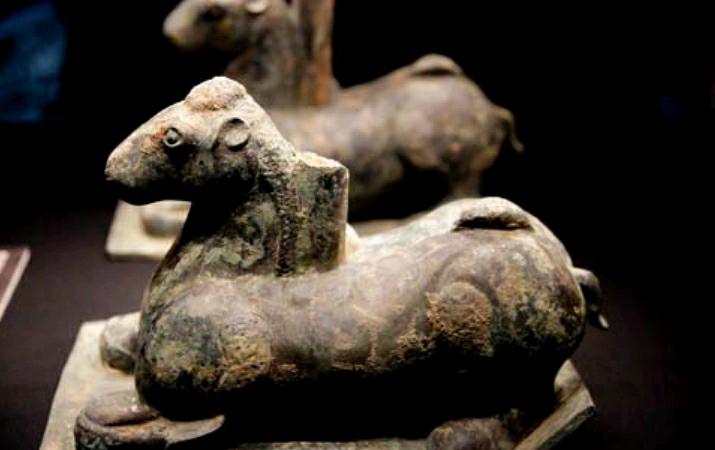
The greatest number of relics was housed in the north section. About 2 million five-zhu (zhu: an ancient Chinese weight unit) bronze coins were piled in a two-meter-high mound weighing more than 10 tons. The coins are worth about 50 kilograms of gold today. Nearby were a set of musical instruments. In east storage were kitchenware and tableware including a three-leg bronze pot resembling contemporary hotpots.
Archeologists were particularly excited about the relics found in the main chamber. A group of lacquered screens discovered in the west side of the chamber bear portraits of historical figures, and faded inscriptions alongside them indicated that they were depictions of Confucius and some of his followers. Some archeologists believe that they have found the oldest portrait of Confucius ever discovered in China. The find also supports the historical theory that rulers of the Western Han Dynasty held a policy of “solely venerating Confucianism.” In the west chamber was an astonishing volume of gold ware.
After four years of excavation, archeologists unearthed more than 10,000 pieces of rare relics including 3,000 pieces of bronze, silver, gold, and iron ware, more than 500 pieces of jade ware, 3,000 pieces of wooden lacquerware, 500 pieces of ceramics, and thousands of bamboo slips and wooden tablets. These findings have greatly enhanced humanitys knowledge and understanding of the Han Dynasty.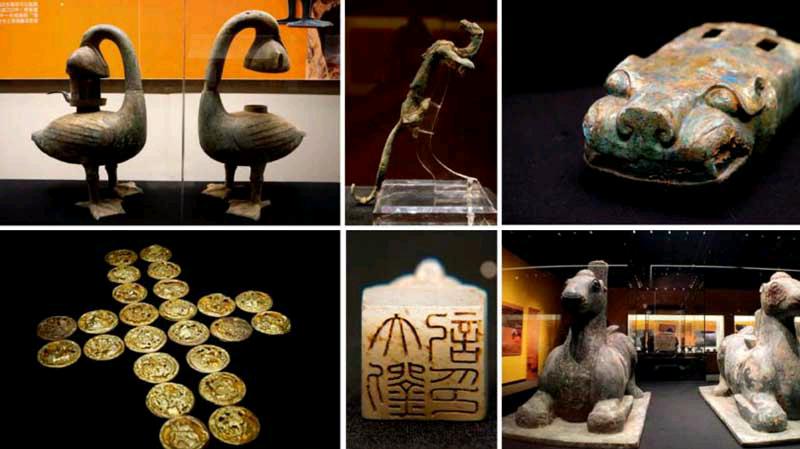
Tomb Owner Liu He
When the excavation began, Yang and his teammates knew that the tomb belonged to Marquis Haihun. Haihun was a feudal prefecture that the Han Dynasty set up in 201 B.C. Its territory covered todays northern Xinjian County and northern Nanchang County of Nanchang City. The title of Marquis Haihun was inherited across four generations in 168 years. The archeologists first hypothesized that the occupant of the tomb was Liu He, the first Marquis Haihun. According historical records such as The Book of Han and General History of Jiangxi, Marquis Haihun Liu Hes tomb was placed 30 kilometers northwest of Jianchang County(60 kilometers north of todays Nanchang City). The recent hole from which robbers began stealing relics appeared in 2011 in the same area.
In April 2011, the archeological team conducted a comprehensive survey of a five-square-kilometer area around the tomb and confirmed the sites of an ancient city, cemetery and tomb. The cemetery covers about 40,000 hectares and consists of nine tombs and a horse and chariot pit. Next to the cemetery is the site of the capital city of Haihun Prefecture. The complete layout and sacrificial system of the cemetery implied that it belonged to Marquis Haihun – the top local aristocrat during the Western Han Dynasty. The relics excavated from the tomb provided more evidence. In May 2012, archeologists discovered a burial pit with five colored wooden chariots and skeletons of 20 horses, as well as more than 3,000 exquisite pieces of bronze riding gear and chariot parts. This was the first burial pit with real horses and chariots ever found in Chinese areas south of the Yangtze River. The Han Dynasty imposed strict regulations on horse and chariot pits. The finding reinforced the archeologists theory that the tomb belonged to Liu He, the first Marquis Haihun. Later, archeologists found the crucial evidence: a jade seal bearing the name of Liu He near the waist of the corpse in the casket.


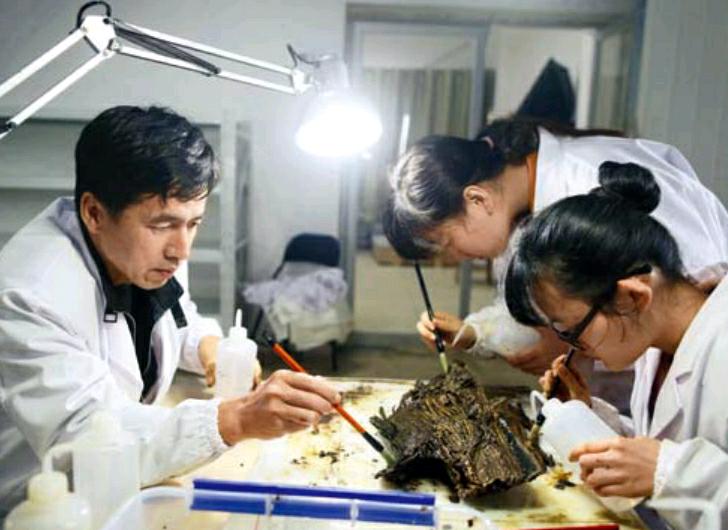
Of the four generations of Marquis of Haihun, Liu He endured the most twists and turns in life. A grandson of Emperor Wu of Han, one of the greatest monarchs in Chinese history, Liu He died at the age of 33. He was even emperor for a time, but removed from the throne after only 27 days, making him the shortest-reigning emperor of the Han Dynasty. After his abdication, he was exiled to Changyi in todays Shandong Province and then Haihun Prefecture of Jiangxi.
Excavation and Protection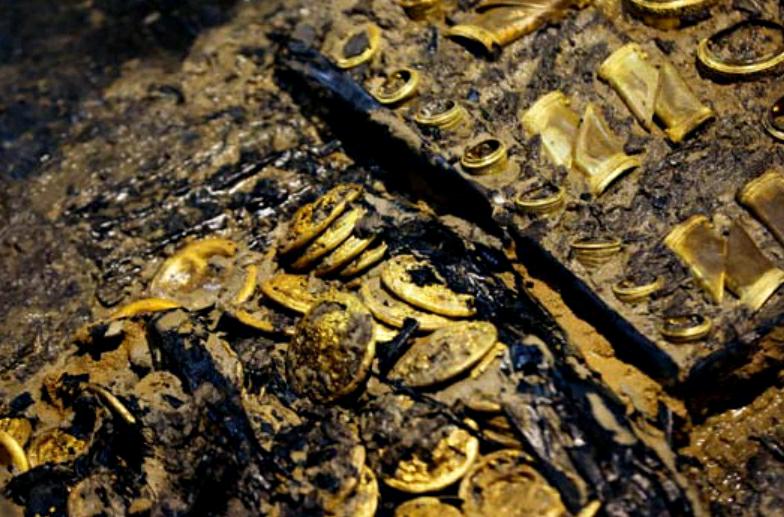
The excavation and protection of Marquis Haihuns tomb were conducted synchronously. Since 2011, Chinas top archeologists have been gathering there to excavate and research the tomb. Five experts including postdoctoral researchers from the Chinese Academy of Social Sciences spent a month removing silt from the 10-ton pile of ancient coins in the tombs main chamber.
Unearthed relics include textiles, metal ware, and wooden lacquerware. Relics that couldnt be cleaned at the site were transported to laboratories for cleaning and research. Moreover, the archeological team constructed special storage containers near the tomb to protect relics and employed various storage methods depending on the type of relic.
To Yang and his teammates, archeology is more than just digging up buried treasure– its decoding the information contained in the relics. In fact, excavation is only the first step for archeologists. Next, they will conduct extensive protection and research. A lacquerware restoration expert joked that he would retire before finishing everything in the tomb. “That task could also span generations,” grins Yang Jun.

